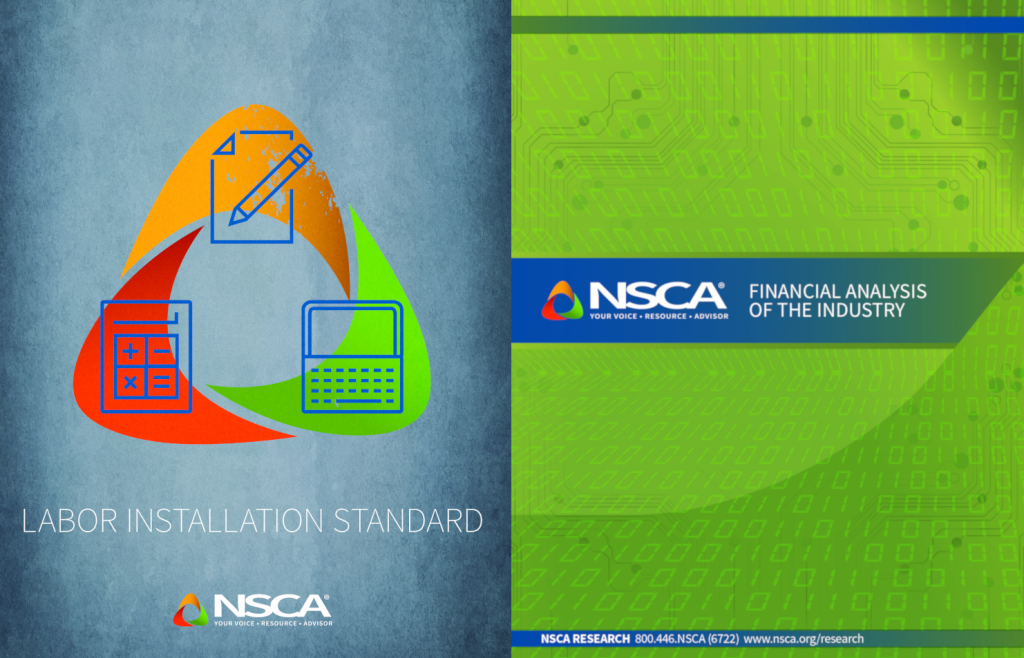The winter months are over, spring is upon us and preparation for a busy project season is just around the corner. Sales teams and design teams are closing and bringing in projects that will continue throughout the summer and into the fall.
On a daily basis at NSCA, I chat with integrators about being more efficient. Efficiency leads to more time being available, higher levels of profitability and happier customers (assuming, of course, that quality isn’t sacrificed for efficiency).
Integrators often ask us how they can increase profits without adding dollars to the top line. We frequently hear this question: “Our sales are growing, but our profits are not. Now what?” This problem is nothing new; in fact, we’ve been sharing insights and resources for many years to help integrators improve in this area. However, sometimes, in business—as in life—you have to keep it simple and get back to the basics.
Setting Billing Rates
Profitability often comes down to billing rates. So, what should your billing rate be for your area? Although NSCA can’t give you a specific number, we can help you determine appropriate billing rates based on industry benchmarks and metrics.
Here are a few questions to think about when you set your billing rate:
- What is the utilization rate of your techs/installers?
- What is the utilization rate of your project managers?
- What is your multiplier factor of labor?
- What is your gross profit on each project, and are you meeting industry averages?
- What is your current burden rate?
Answering those questions is important in determining whether a project provides a positive contribution to your bottom line. When I have this billing conversation with a member and ask him or her that list of questions, I like to provide responses to give that individual an idea of where to start. Consider the following example:
- What is the utilization rate of your techs/installers? 85 percent
- What is the utilization rate of your project managers? 75 percent
- What is your multiplier factor of labor? 2.5
- What is your gross profit on each project, and are you meeting industry averages? 35 percent
- What is your current burden rate? 30 percent to 33 percent
NSCA offers free in-house resources and benchmarks, such as the Financial Analysis of the Industry and Labor Installation Standard (see above), to help you make more informed, more data-driven business decisions about questions like these. We also offer additional business resources through long-time partners, such as Solutions360, Navigate Management Consulting, Enterprise Performance Consulting and D-Tools. These partners can further ensure that your projects are on track.
A quick and easy way to see how a specific project is contributing to your company’s bottom line is to use NSCA’s free Project Contribution Simulator Tool. Built by Solutions360, it demonstrates how properly burdening labor, spearheading eroding margins and understanding your true costs of doing business can affect your bottom line (operating income).
Advice From The Experts
As you enter your busy season, a few of our partners have some helpful pointers for you to remember.
Brad Malone and Steve Riley, from Navigate Management Consulting, remind us that everything starts with a solid foundation; that includes your projects. When project hand-off from sales to operations goes smoothly, you’re already set up for victory.
Successful projects start with robust needs-assessment practices and comprehensive scopes of work. Agreement between your organization and the client on the contents of these documents, prior to the work beginning, is critically important. Otherwise, project change management is difficult to manage and track—and the likely result is an unhappy client who might or might not have received the solution for which it had hoped (and a support department that might not know what was ultimately delivered).
Nadim Sawaya, of Enterprise Performance Consulting, offers some pointers on getting ready for the busy season, as well. The biggest challenges he sees for integrators involve maximizing project resources (mainly manpower) and doing things right the first time.
His nine steps will help guarantee a successful project delivery:
- Complete project installation documentation so that almost any electrician could install.
- Get your installation drawings approved by the customer prior to any fieldwork beginning.
- Conduct a formal kickoff meeting with all project stakeholders.
- Provide the project installation team with 75 percent of budgeted hours (keep 25 percent for yourself as a buffer).
- Prepare an overall manpower schedule (including subcontractors) for the next three months.
- Contact your customer two days before the start of site work and go over your site-readiness checklist.
- Document and communicate any site delays caused by other trades on daily basis.
- Get partial approval/acceptance of your work.
- Get a certificate of completion, including start-of-warranty notice, on all projects.
To help you complete this list, you might also want to consult NSCA’s Essentials Online Library. Another free tool for NSCA members, it’s full of more than 650 documents, templates and checklists for use; those include things like kickoff-meeting agendas, system and site checklists, and project-closeout forms.
Although these ideas and tips might seem elementary, the simple act of getting back to basics is sometimes the best way to ensure a smooth, profitable project. When each project starts off right, you’ll have a much easier time ensuring success—and you’ll be able to reference benchmarks and metrics along the way.
If you’re looking for more resources to help you better understand how to implement new processes, improve project profitability and increase your bottom line, just send me a note by emailing mabernathy@nsca.org.
